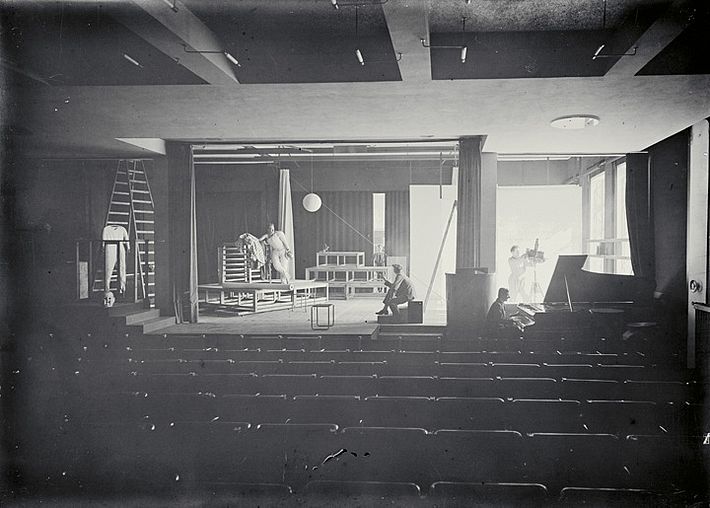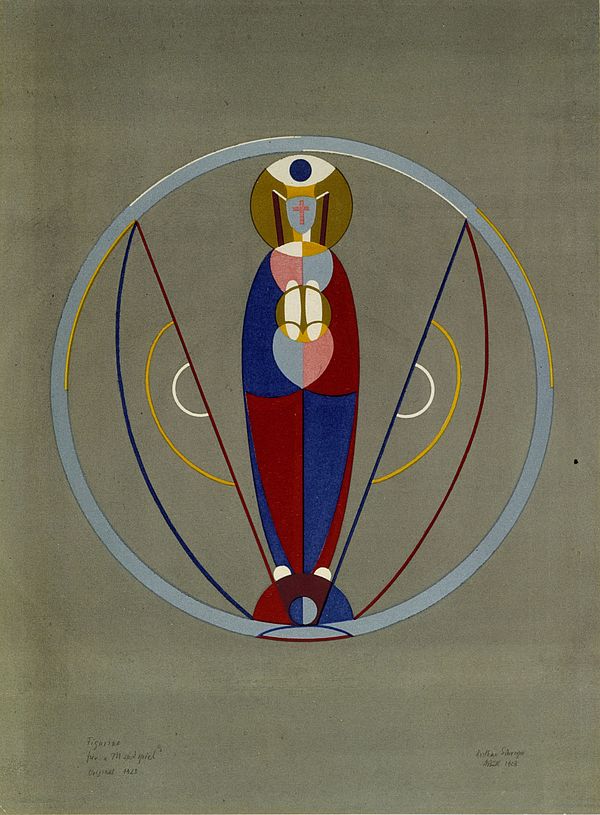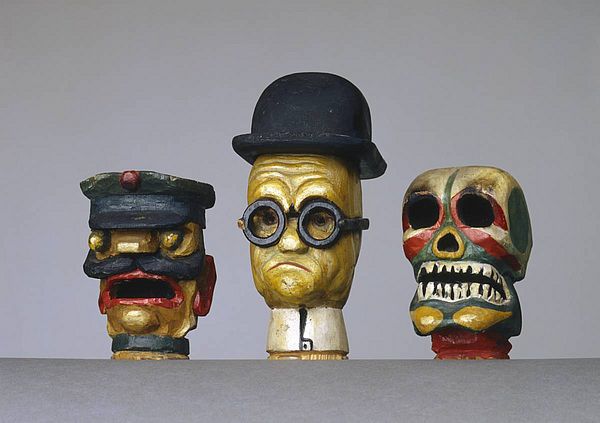Stagecraft
1921–1929
The stagecraft workshop was headed first by Lothar Schreyer and from 1923 by Oskar Schlemmer. Schlemmer introduced his students to modern dance and had a lasting impact on stage activities at the Bauhaus.

Masters & Teachers
Lothar Schreyer, 1921–1923
Oskar Schlemmer, 1923–1929
[Translate to English:] Headline
Walter Gropius saw structural similarities between building and the stage. In order to explore the methods of stage work, he established a stage workshop in which students from all departments were encouraged to participate. Gropius entrusted the development of the workshop to the stage designer and dramaturg Lothar Schreyer, who was the head of the expressionist ‘Sturm-Bühne’ in Berlin from 1918 to 1921.
Schreyer concealed his figures behind geometric full-body masks, mainly in order to explore issues related to the language of form. However, his plays such as ‘Mondspiel’ (Moon Play) or ‘Kreuzigung’ (Crucifixion) were poorly received at the Bauhaus. In 1923, Schreyer left the school. He was succeeded by Oskar Schlemmer, whose ‘Triadic Ballet’, which he created in 1922, was performed at the Bauhaus the same year. Schlemmer developed a stage theory which centred on the relationship of the human being to space. His Bauhaus dances were definitive productions for the Bauhaus stage in Dessau.
[Translate to English:] text
From 1928, Schlemmer, whose workshop had a very modest budget, had less and less time for the stage. He began to teach his course ‘Der Mensch’ (the human being) and also taught life drawing. Schlemmer ultimately saw his stage work as antithesis to the agitprop theatre introduced to the Bauhaus by a group of young Communist students. These were even permitted to participate in the only tour made by the Bauhaus stage with one of their own plays. Schlemmer radically rejected the presence of political agitprop theatre at the Bauhaus.
By 1926, Xanti Schawinsky – a former active member of the Bauhaus Stage – was already engaged for a season at the Stadttheater in Zwickau, where he worked as a set designer. After returning to the Bauhaus in 1927 he gave classes about the practical experiences he had gained on the ground. When Walter Gropius resigned from his post as director of the Bauhaus and was replaced by Hannes Meyer, Schawinsky was appointed there to teach stage design. Schlemmer submitted his resignation in the summer of 1929. In order to reduce costs, Hannes Meyer closed the Bauhaus stage down after Schlemmer’s departure.



